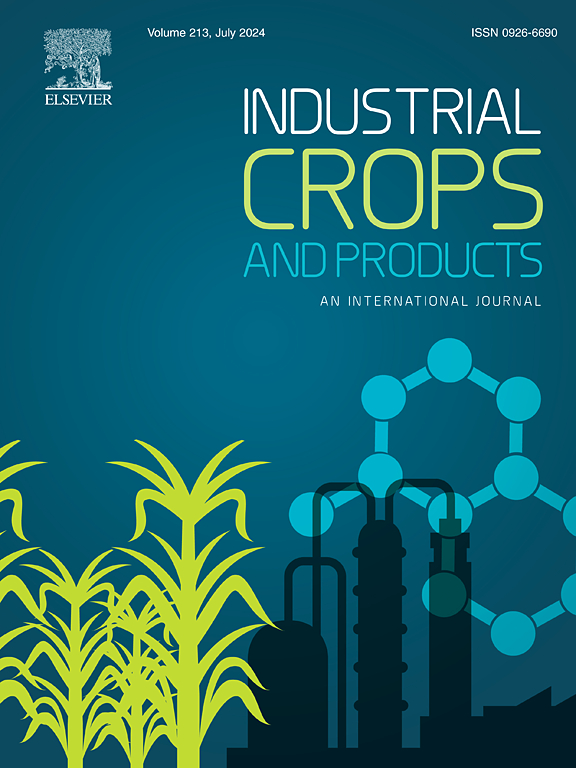Comprehensive analysis of the complete chloroplast genome of the cultivated soapberry and phylogenetic relationships of Sapindaceae
IF 5.6
1区 农林科学
Q1 AGRICULTURAL ENGINEERING
引用次数: 0
Abstract
Soapberry (Sapindus mukorossi) is an important industrial raw material tree species with multiple applications. However, little progress has been made in the comparative genomics, phylogeny, and breeding of soapberry due to a lack of genomic resources. In this study, the complete chloroplast (cp) genomes of cultivated soapberry species (S. mukorossi ‘Yuanhua’) was sequenced using Illumina and PacBio sequencing for the first time. Its length is 160,463 bp, encoding 86 protein genes, 8 transfer RNA genes, and 37 ribosomal RNA genes. 49 long repeat sequences and 88 simple sequence repeats (SSRs) were detected. In addition, to elucidate the characteristics of the chloroplast genome of S. mukorossi ‘Yuanhua’, it was compared with 11 other chloroplast genome sequences of Sapindaceae, demonstrating that sequence variations are considerably greater in the small single copy (SSC) and the large single copy (LSC) than inverted repeat (IR) regions. Meanwhile, protein-coding regions are more stable than non-coding sequences. Contraction and expansion of the IR region of the chloroplast genome were analyzed through comparison of the boundaries between IR, LSC, and SSC regions. Maximum likelihood phylogenetic analysis was conducted based on 28 complete chloroplast genome sequences. The results support the classification concept of a broad Sapindaceae (Dodonaeoideae, Sapindoideae, Hippocastanoideae, and Xanthoceroideae). This study enriches the chloroplast genome database of Sapindaceae, laying the foundation for species identification of Sapindus. The results obtained here define the phylogeny of Sapindaceae and further support the concept Sapindaceae sensu lato.
求助全文
约1分钟内获得全文
求助全文
来源期刊

Industrial Crops and Products
农林科学-农业工程
CiteScore
9.50
自引率
8.50%
发文量
1518
审稿时长
43 days
期刊介绍:
Industrial Crops and Products is an International Journal publishing academic and industrial research on industrial (defined as non-food/non-feed) crops and products. Papers concern both crop-oriented and bio-based materials from crops-oriented research, and should be of interest to an international audience, hypothesis driven, and where comparisons are made statistics performed.
 求助内容:
求助内容: 应助结果提醒方式:
应助结果提醒方式:


